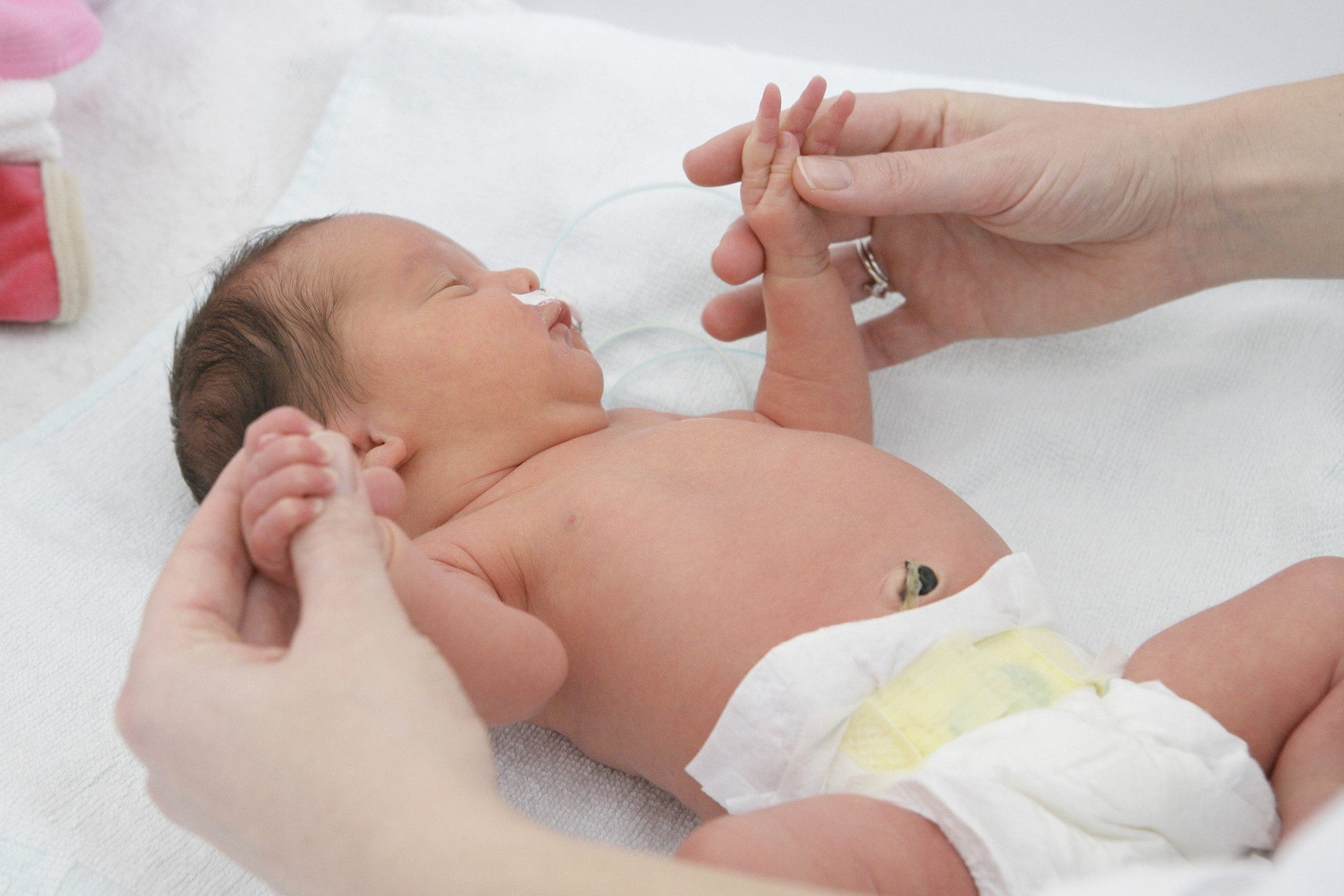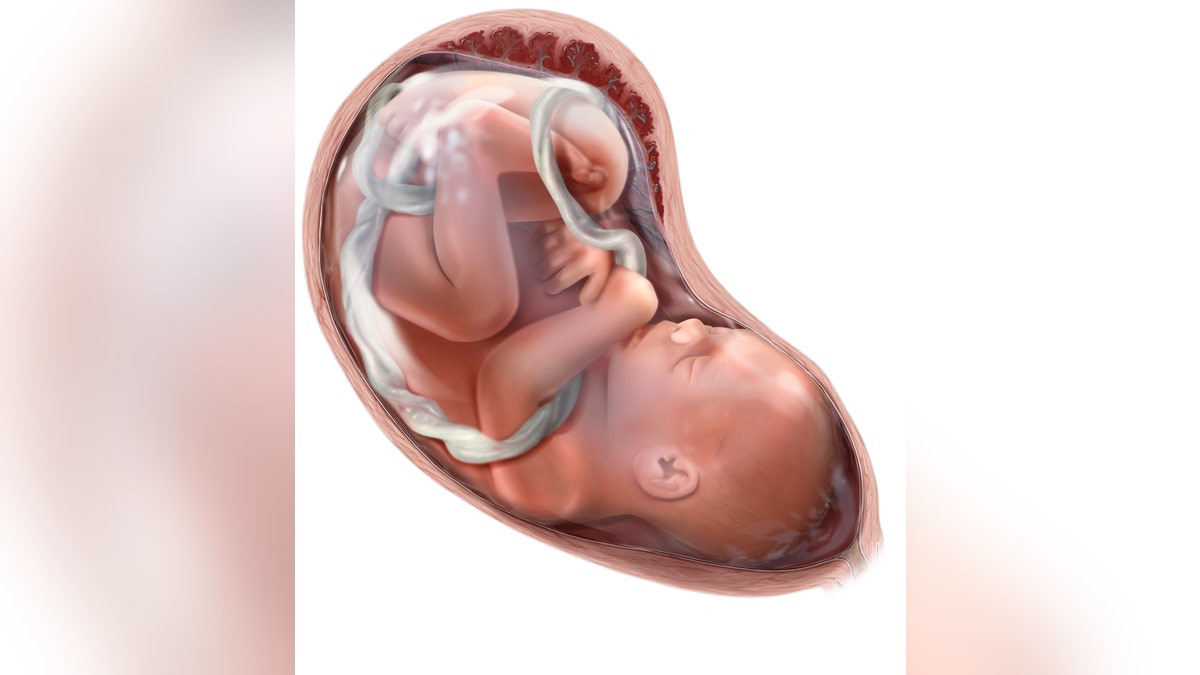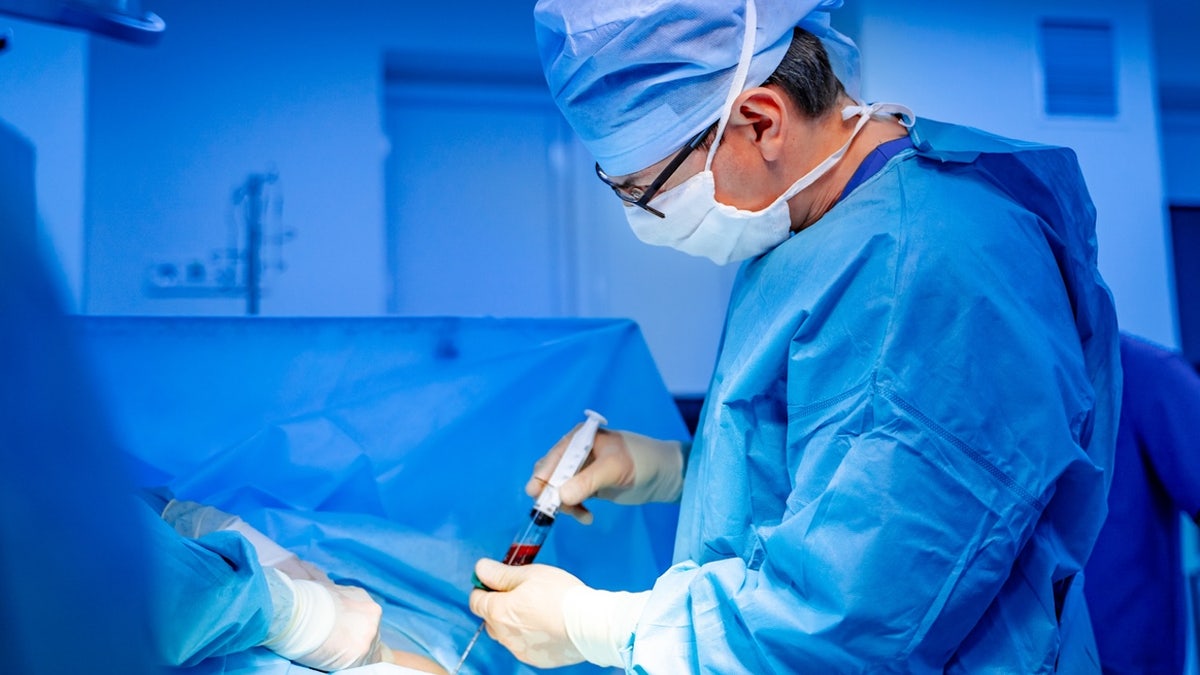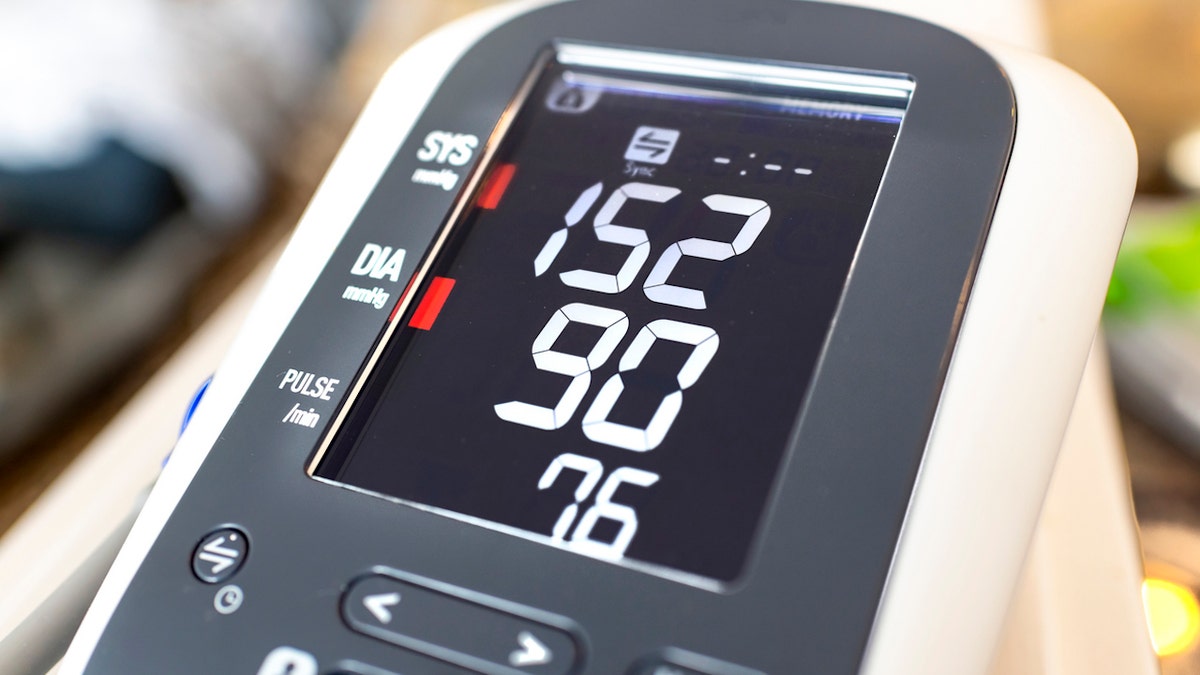Health
Is cord blood banking a worthwhile investment in your child’s future?

The umbilical cord — the lifeline between mother and baby — was historically discarded as medical waste after birth.
Today, an increasing number of parents are choosing to preserve the cord blood for its potential to safeguard their child’s future health.
The birth of a baby comes with an overwhelming number of decisions, one of which is whether to bank the newborn’s cord blood cells.
MEET THE AMERICAN WHO HELPED SAVE MILLIONS OF NEWBORN BABIES, DR. VIRGINIA APGAR, PHYSICIAN AND MUSICIAN
Whether cord blood banking is worth it for a family hinges on various factors, including the present health of their child, the existence of twins in the family and many other individual considerations.
What is cord blood banking?
Cord blood banking involves the collection and storage of stem cells derived from the blood of a newborn’s umbilical cord immediately after birth.
The reason is its potential life-saving abilities, as the hematopoietic stem cells found in cord blood have the unique ability to differentiate into various types of blood cells.
There are two main types of banks for cord blood: public and private. (BSIP/UIG)
Preserving the cord blood cells provides an option for future therapeutic use in treating a range of diseases for the child or siblings.
These stem cells are less likely to face rejection during transplant due to their immature nature. This widens the blood cells’ applicability in medical procedures for the donor or family members.
Cord blood banking process
Cord blood banking can be done from either a vaginal or surgical birth, and regardless of whether the labor was induced or occurred naturally.
Once the parents decide to store the blood, the doctor will clamp the umbilical cord in two places and cut the cord, separating the mother from the child.
Once the blood has been collected and sealed, it will be sent to a cord blood bank for storage.
The doctor will inject a needle into the cord and collect, in general, between 60 and 300 milliliters (mL) of cord blood. The collected volume can vary, however, and not all collections will be sufficient for future therapeutic use for the child or siblings.
Once the blood has been collected and sealed, it will be sent to a cord blood bank for storage.

In the United States, the Food and Drug Administration (FDA) regulates cord blood banking and donation. (Education Images/Universal Images Group )
Collecting fluid in this process is relatively easy and does not cause pain to the mother or baby, according to webmd.com.
The collection process generally takes around five minutes to complete.
The blood can be stored at several different sites, based on the family’s decisions and circumstances.
- Public cord banks. These are free to use, but donations made are available to anyone.
- Private cord banks. These blood banks will store the blood for use only by the donor and family members of the donor. This can be an expensive option as there is a processing fee and an annual storage fee.
- Direct-donation banks. These are a mixture of public and private banks. They store cord blood for public use but also accept donations to reserve the stem cells for the child.

Cord blood is collected immediately after birth in a painless process that does not harm the mother or the baby. (BSIP/Universal Images Group)
When discussing the options, cord blood banking often refers to private banking, while cord blood donation generally refers to public banking.
Private cord banking may not be worth the financial expense for the family, according to the American College of Obstetricians and Gynecologists and the American Academy of Pediatrics. The reason is that the price is steep for the chance that the child will need to use the blood at some point in time.
PARENTS WELCOME 14-POUND BABY, THE LARGEST ON RECORD SINCE 2010: ‘EVERYBODY WAS MAKING BETS’
These organizations suggest that routine storage of cord blood for stem cells as a sort of insurance is unproven, and therefore they caution parents when considering it.
Donating to a public storage bank could benefit the community, however, according to these organizations.

There is usually no cost to donate cord blood to a public bank, but private banking can be pricey, involving initial collection fees and annual storage fees. (BSIP/UIG)
What are the uses of cord blood banking?
Cord blood banking can be beneficial because the stem cells are hematopoietic stem cells, meaning they are immature but can become mature cells of different types within the body.
Not only do they require less matching, they also cause fewer infections.
BABY SLEEP DANGERS REVEALED IN NEW STUDY AS NEARLY 70% OF INFANT DEATHS WERE DUE TO CO-SLEEPING
The stem cells within the umbilical cord can provide life-saving assistance for several conditions later in life.
Stem cells from the umbilical cord can treat a variety of conditions, including:
- Cancer
- Anemia
- Immune system disorders

Once the cord blood is collected and stored, it can remain viable for a long time. Research suggests that cord blood can be stored for at least 10 years but often much longer. (QAI Publishing/Universal Images Group )
A benefit of using cord blood stem cells is that they rarely result in infectious diseases.
They are also highly effective as they are half as likely to be rejected compared to other stem cells because they are immunogenic due to their immature nature.
What are the cons of cord blood banking?
There is only about an 8% usage rate of blood that has been stored through this process, according to a study cited by the National Library of Medicine.
Part of the reason for the low rate is that the blood is not always useful for a disease that develops later on in life.
HEALTH BENEFITS OF CONSUMING VINEGAR, PLUS TIPS FROM A DIETITIAN
Many factors go into whether cord blood can be used, such as from a set of twins when one twin is healthy and the other is born with a genetic disorder.
The blood drawn from the ill child can not be used later on for the healthy child, but the reverse could be true if the blood is a good match.

Patients are more likely to find a genetic match among donors of their own ethnic background. (BSIP/Universal Images Group)
There are many circumstances that the American Academy of Pediatrics lays out as not ideal conditions for cord blood banking.
Identical twins are not often the best match for each other because a slight genetic difference in the blood cells is recommended.
Additionally, public blood banks can only accept donations from umbilical cords from a mother carrying a single child. This is due to the possibility that the blood units could get mixed up during the collection with twins.
Another downside of using cord blood cells is that it takes longer for them to create the therapeutic effect desired because they are hematopoietic stem cells.
How much does cord blood banking cost?
Typically, there are two separate fees involved when preserving a child’s cord blood cells, according to the American Pregnancy Association. The initial fee covers the enrollment and collection.
Then, there is an annual storage fee.
CLICK HERE TO SIGN UP FOR OUR HEALTH NEWSLETTER
Those who go this route can expect to pay in the range of $1,350 and $2,350 for the initial collection, testing and registering, according to the American Academy of Pediatrics. Annual storage fees often range from $100 to $175, but the costs of individual storage banks will vary.

Currently, research into cord blood stem cells is ongoing. Scientists are investigating the potential for treating conditions such as cerebral palsy and Type 1 diabetes. (iStock)
If the parents donate the blood cells from the umbilical cord, there is no cost.
The future of cord blood banking
The future trajectory of cord blood banking remains uncertain. Nonetheless, preserving cord blood cells today may have significant health benefits, offering new avenues for disease treatment as the field advances.
For more Health articles, visit www.foxnews/health
Considering the first successful umbilical cord blood stem cell transplant was performed as recently as 1988, as documented by the National Library of Medicine, the science around this practice is relatively young.
With ongoing research, the scope and efficacy of cord blood use are bound to expand.

Health
Chronic Pain Afflicts Billions of People. It’s Time for a Revolution.

“In the beginning, everyone thought they were going to find this one breakthrough pain drug that would replace opioids,” Gereau said. Increasingly, though, it’s looking like chronic pain, like cancer, could end up having a range of genetic and cellular drivers that vary both by condition and by the particular makeup of the person experiencing it. “What we’re learning is that pain is not just one thing,” Gereau added. “It’s a thousand different things, all called ‘pain.’”
For patients, too, the landscape of chronic pain is wildly varied. Some people endure a miserable year of low-back pain, only to have it vanish for no clear reason. Others aren’t so lucky. A friend of a friend spent five years with extreme pain in his arm and face after roughhousing with his son. He had to stop working, couldn’t drive, couldn’t even ride in a car without a neck brace. His doctors prescribed endless medications: the maximum dose of gabapentin, plus duloxetine and others. At one point, he admitted himself to a psychiatric ward, because his pain was so bad that he’d become suicidal. There, he met other people who also became suicidal after years of living with terrible pain day in and day out.
The thing that makes chronic pain so awful is that it’s chronic: a grinding distress that never ends. For those with extreme pain, that’s easy to understand. But even less severe cases can be miserable. A pain rating of 3 or 4 out of 10 sounds mild, but having it almost all the time is grueling — and limiting. Unlike a broken arm, which gets better, or tendinitis, which hurts mostly in response to overuse, chronic pain makes your whole world shrink. It’s harder to work, and to exercise, and even to do the many smaller things that make life rewarding and rich.
It’s also lonely. When my arms first went crazy, I could barely function. But even after the worst had passed, I saw friends rarely; I still couldn’t drive more than a few minutes, or sit comfortably in a chair, and I felt guilty inviting people over when there wasn’t anything to do. As Christin Veasley, director and co-founder of the Chronic Pain Research Alliance, puts it: “With acute pain, medications, if you take them, they get you over a hump, and you go on your way. What people don’t realize is that when you have chronic pain, even if you’re also taking meds, you rarely feel like you were before. At best, they can reduce your pain, but usually don’t eliminate it.”
A cruel Catch-22 around chronic pain is that it often leads to anxiety and depression, both of which can make pain worse. That’s partly because focusing on a thing can reinforce it, but also because emotional states have physical effects. Both anxiety and depression are known to increase inflammation, which can also worsen pain. As a result, pain management often includes cognitive behavioral therapy, meditation practice or other coping skills. But while those tools are vital, it’s notoriously hard to reprogram our reactions. Our minds and bodies have evolved both to anticipate pain and to remember it, making it hard not to worry. And because chronic pain is so uncomfortable and isolating, it’s also depressing.
Health
7 blood pressure mistakes that could be throwing off your readings

Several key mistakes could throw off the accuracy of blood pressure readings for people who take them at home.
The average “normal” blood pressure is 120/80, according to the American Heart Association.
Almost half of all U.S. adults have elevated blood pressure (systolic pressure between 120 and 19 and diastolic pressure less than 80). High blood pressure (hypertension, which is when the systolic pressure is between 130 and 139 or diastolic pressure is between 80 and 89) can raise the risk of heart attack and stroke if left untreated, per the AHA.
JUST 5 MINUTES OF EXERCISE COULD REDUCE HIGH BLOOD PRESSURE, STUDY FINDS
“It is very common to see patients with bad data,” said Dr. Bradley Serwer, a Maryland-based cardiologist and chief medical officer at VitalSolution, an Ingenovis Health company that offers cardiovascular and anesthesiology services to hospitals.
The average “normal” blood pressure is 120/80, according to the American Heart Association. (iStock)
“It is essential to follow the proper standardized instructions.”
The cardiologist shared with Fox News Digital the following common mistakes he often sees patients make when monitoring their blood pressure.
1. Using the wrong arm position
Certain arm positions can lead to inflated results and misdiagnoses of hypertension. This was supported by recent research from Johns Hopkins Medicine.
BLOOD PRESSURE IS ‘HIGHER THAN NORMAL’ FOR 1 IN 7 KIDS, SAYS AMERICAN HEART ASSOCIATION
People who rested their arms on their laps drove up the top number in the blood pressure reading (systolic pressure) by nearly 4 mmHg, while leaving their arm hanging at their side increased it by nearly 7 mmHg.
For the most accurate results, the guidelines are to rest the arm on a desk or another firm surface at the same level as the heart, Serwer told Fox News Digital.
2. Sitting in the wrong position
“The proper position is to sit upright with your feet on the floor and your legs uncrossed, resting your arm on a flat surface that is level with your heart,” Serwer advised.

Certain arm positions can lead to inflated results and misdiagnoses of hypertension, research has shown. (iStock)
3. Using the wrong type or size of cuff
If the cuff is too large or small, measurements will be abnormal, the cardiologist cautioned.
“Most blood pressure monitors use either an arm cuff or a wrist cuff,” he said. “Arm cuffs tend to be more accurate and require fewer steps to ensure accuracy.”
4. Not calibrating the cuff
Serwer said he typically asks all patients to bring their home cuff to the office, where he first measures their blood pressure manually and then uses the patient’s cuff.
“We can then assess the accuracy of their cuff,” he said.
5. Not allowing enough time to equilibrate
The most accurate results are obtained after sitting in a low-stress environment for five minutes, Serwer noted.
“Know your blood pressure, even if you are healthy.”
6. Drinking caffeine beforehand
“Avoid stimulants before measuring your pressure, as caffeine will raise it,” Serwer said.
7. Checking at different times of day
When taking blood pressure, Serwer recommends checking it twice and waiting at least one minute between measurements.
“Blood pressure fluctuates throughout the day, so checking your pressure at the same time each day gives us a better trend,” he added.
Serwer also advises his patients to track their blood pressure readings in a log.

“If the average blood pressure reading is greater than 130/80, they have stage I hypertension and should be evaluated by their primary care provider,” a cardiologist said. (iStock)
“If the average blood pressure reading is greater than 130/80, they have stage I hypertension and should be evaluated by their primary care provider,” he said.
“If their blood pressure is greater than 180/100 or if they have symptoms of chest pain, shortness of breath or severe headache, they should seek immediate attention.”
CLICK HERE TO SIGN UP FOR OUR HEALTH NEWSLETTER
Even if there are no other symptoms other than high blood pressure, Serwer emphasizes that people shouldn’t wait until they have complications before treating hypertension.
“Heart attacks, strokes, renal failure and peripheral vascular disease can often be avoided with early interventions,” he said.

In most cases, making lifestyle changes such as improving your diet, exercising regularly and maintaining a healthy weight can help keep blood pressure within a safe range, according to the AHA. (iStock)
“Know your blood pressure, even if you are healthy.”
In most cases, making lifestyle changes such as improving your diet, exercising regularly and maintaining a healthy weight can help keep blood pressure within a safe range, according to the AHA.
For more Health articles, visit www.foxnews.com/health
When necessary, a doctor can provide guidance on medications to treat hypertension that does not respond to lifestyle changes.
Health
Words and game of Scrabble keep married couple in wedded bliss for decades

A married couple who have long enjoyed the game of Scrabble both together and separately before they even met are never at a loss for words — and attribute their wedded bliss in part to their love of the nostalgic game.
They’re still playing in tournaments built around the game decades after they began doing so.
Graham Harding and his wife Helen Harding, both in their 60s, have been married for over 20 years.
WATCHING GAME SHOWS LIKE ‘JEOPARDY!’ AND ‘WHEEL OF FORTUNE’ CAN BOOST COGNITIVE HEALTH, SAY EXPERTS
They met in the 1990s at Scrabble tournaments, as news agency SWNS reported.
But it was a “special match” in 2000 that brought the couple together — and has kept them together now.
Graham and Helen Harding on their wedding day. They’ve been playing in Scrabble tournaments for some 30 years. (Courtesy Graham and Helen Harding via SWNS)
Graham Harding is from the East Berkshire Scrabble Club, while his wife Helen is from the Leicester Scrabble Club in the U.K.
They have been taking part in the UK Open Scrabble Championship in Reading this week.
“The more words you know, the more ammunition you’ve got.”
“Scrabble is all about having a good vocabulary,” said Graham Harding, SWNS noted.
7 HEALTHY LIFESTYLE CHANGES THAT COULD HELP REDUCE RISK OF DEPRESSION, SAYS STUDY: ‘ENORMOUS BENEFITS’
“But it is a Scrabble vocabulary — not necessarily everyday English.”
Added Helen Harding, “The more words you know, the more ammunition you’ve got.”

Graham and Helen Harding’s wedding cake. They bonded over their love of Scrabble – and are still playing in tournaments together. (Courtesy Graham and Helen Harding via SWNS)
The couple said they were “vague acquaintances” for about five years after they first met.
Then they got together after a special match in Swindon.
CLICK HERE TO SIGN UP FOR OUR HEALTH NEWSLETTER
They maintained a long-distance relationship before they got married in 2004.
The couple even brought their Scrabble board to their wedding.

The couple likely have played thousands of games between them. (Courtesy Graham and Helen Harding via SWNS)
It featured a message with Scrabble pieces that said, “Congratulations on your wedding day” — while their wedding cake said, in Scrabble letters, “Helen and Graham.”
For more Health articles, visit www.foxnews.com/health
They each took up the hobby early in life well before they met each other.
The tournament that’s been taking place this week is the first since the COVID pandemic after a five-year break — and the couple has played some two dozen games in it as of Friday, SWNS reported.
-

 Politics1 week ago
Politics1 week agoNew Orleans attacker had 'remote detonator' for explosives in French Quarter, Biden says
-

 Politics1 week ago
Politics1 week agoCarter's judicial picks reshaped the federal bench across the country
-

 Politics1 week ago
Politics1 week agoWho Are the Recipients of the Presidential Medal of Freedom?
-

 Health1 week ago
Health1 week agoOzempic ‘microdosing’ is the new weight-loss trend: Should you try it?
-

 World1 week ago
World1 week agoSouth Korea extends Boeing 737-800 inspections as Jeju Air wreckage lifted
-
/cdn.vox-cdn.com/uploads/chorus_asset/file/25822586/STK169_ZUCKERBERG_MAGA_STKS491_CVIRGINIA_A.jpg)
/cdn.vox-cdn.com/uploads/chorus_asset/file/25822586/STK169_ZUCKERBERG_MAGA_STKS491_CVIRGINIA_A.jpg) Technology3 days ago
Technology3 days agoMeta is highlighting a splintering global approach to online speech
-

 World1 week ago
World1 week agoWeather warnings as freezing temperatures hit United Kingdom
-

 News1 week ago
News1 week agoSeeking to heal the country, Jimmy Carter pardoned men who evaded the Vietnam War draft
















